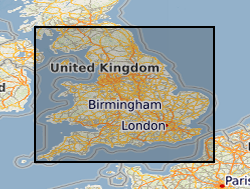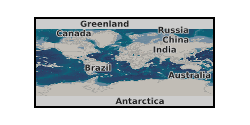txt file
Type of resources
Topics
Keywords
Contact for the resource
Provided by
Years
Formats
Representation types
Update frequencies
-

The BGS Property Subsidence Assessment (PSA) dataset provides insurers and homeowners access to a better understanding of the shrink-swell hazard at both the individual property and/or postcode level for England and Wales. It builds upon the GeoSure shrink-swell data by mapping the hazard to the individual building polygon and considering the other susceptibility factors of building type, foundation depth, and drainage and tree proximity. The user receives GIS building polygons with an overall susceptibility to subsidence score between 1-100. Scores are also classified from non-plastic to very high. Each building polygon is also scored from 1-10 for each subsidence factor (geology, foundation, drainage, building type, building storey and tree proximity). Postcode data is also available as a table showing the ‘average’ PSA score for all buildings within the postcode. The identification of shrink-swell related subsidence prone areas, alongside the inclusion of potential sources to exacerbate this phenomena, can better inform insurers and homeowners and form the basis to make decisions concerning prevention and remediation. The product enhances geological information obtained from GIP and GeoSure via the inclusion of the crucial shrink-swell susceptibility factors (proximity to trees and foundation depth). This therefore allows the derivation of a risk element for the housing stock at Building level, which is then generalised to Postcode level.
-

ShapeCalc is an Excel-based tool that uses 2D crystal intersection widths and lengths to estimate 3D crystal shape. ShapeCalc provides 3D (S:I:L) shape estimates for 2D width-length (w-l) input data. Best estimates are found by comparing the sample w/l distribution with 2618 model w/l distributions covering shapes from 1:1:1 to 1:20:20. Model w/l distributions are obtained by 20000 random sections of a given model shape using the CSDCorrections algorithm (Higgins, 2000). For each model shape, the 20000 w/l datapoints are binned into 25 bins with w/l increments of 0.04. Binned distributions for all 2618 models are stored in the database tab. Compared to existing 2D-to-3D projection tools, ShapeCalc offers more robust constraints in 3D crystal shape (including uncertainty estimates) for a wider range of naturally occurring crystal shapes. ShapeCalc is described and published, with open access; Mangler, M.F., Humphreys, M.C.S., Wadsworth, F.B. et al. Variation of plagioclase shape with size in intermediate magmas: a window into incipient plagioclase crystallisation. Contributions to Mineralogy and Petrology 177, 64 (2022). https://doi.org/10.1007/s00410-022-01922-9
 NERC Data Catalogue Service
NERC Data Catalogue Service